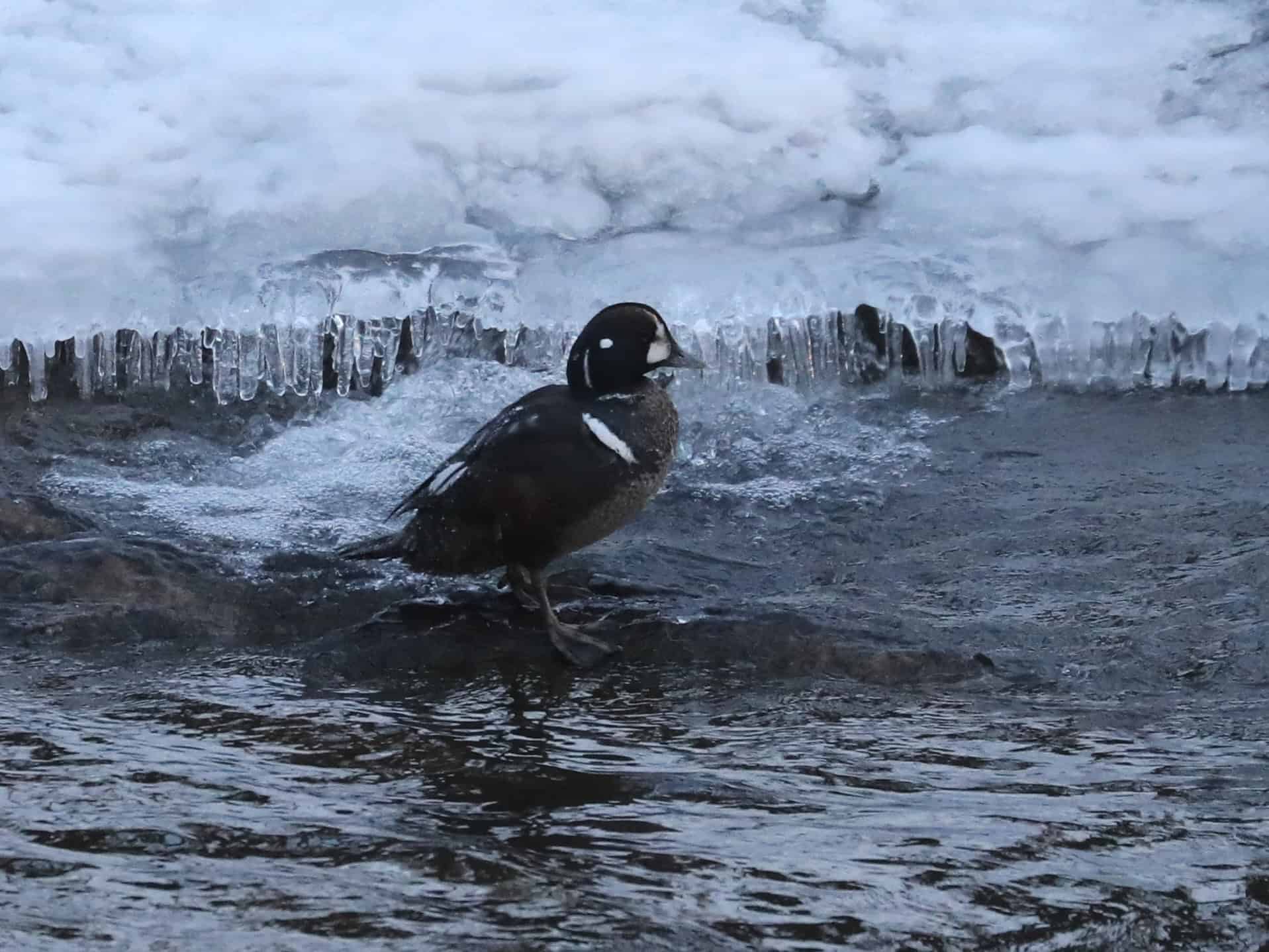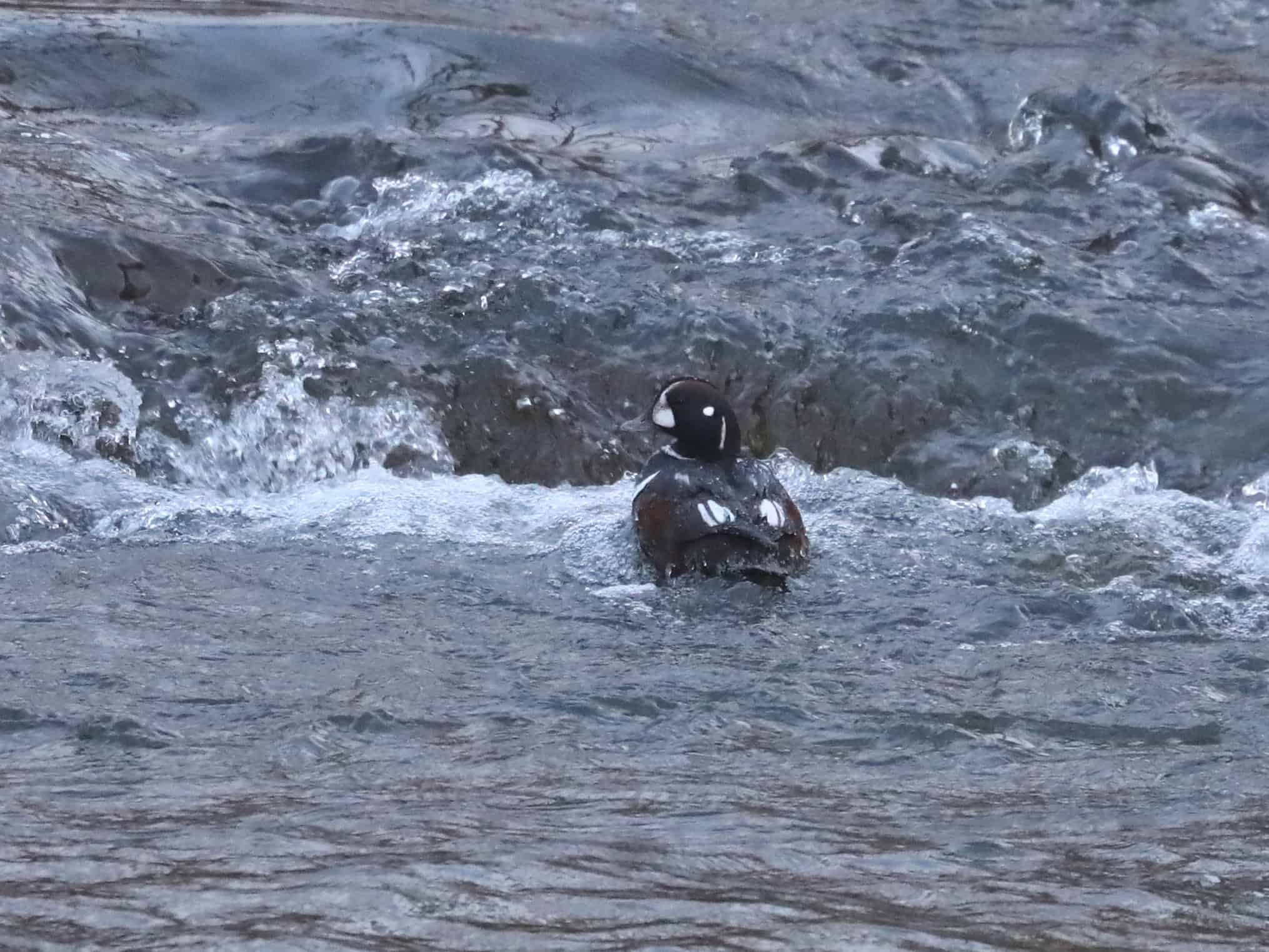Swimming Clowns: Harlequin Ducks
My son Eddie and I got up early one morning this week to see a rare bird that was reported a few hours to the north. This Harlequin Duck is likely a representative of a very small winter population of fewer than 2,000 ducks that spend the winter on the East Coast of the United States and Canada. To see a Harlequin Duck in our area, you usually need to visit the Atlantic Ocean during the winter, or go far north to the Maritime Provinces of Canada during the summer. You can also find them in Greenland and Iceland. A separate population lives on and near the Pacific Ocean in western North America and eastern Asia. I’ve seen Harlequin Ducks only once before in my life, nearly 20 years ago on a trip to New Jersey with my college birding friends.
During all seasons of the year, Harlequin Ducks live in rough, choppy water amongst large rocks. In the nesting season, they dive into the rapids of fast-moving rivers. In winter, they live along rocky coastlines, diving into turbulent water as waves crash against the shore. They use their excellent swimming skills to find crustaceans, insects, and fish eggs where most other birds can’t go. Because of their rough-and-tumble lifestyle, they often suffer broken bones.
Harlequin Ducks get their name from harlequins, clown-like performers in traditional Italian theater. Their scientific name Histrionicus histrionicus reflects that as well, as histrionic refers to overly dramatic theatricality. They’re also known for calling to each other with cute squeaky sounds, giving them the nickname “sea mouse.”
Swimming Clowns: Harlequin Ducks
My son Eddie and I got up early one morning this week to see a rare bird that was reported a few hours to the north. This Harlequin Duck is likely a representative of a very small winter population of fewer than 2,000 ducks that spend the winter on the East Coast of the United States and Canada. To see a Harlequin Duck in our area, you usually need to visit the Atlantic Ocean during the winter, or go far north to the Maritime Provinces of Canada during the summer. You can also find them in Greenland and Iceland. A separate population lives on and near the Pacific Ocean in western North America and eastern Asia. I’ve seen Harlequin Ducks only once before in my life, nearly 20 years ago on a trip to New Jersey with my college birding friends.
During all seasons of the year, Harlequin Ducks live in rough, choppy water amongst large rocks. In the nesting season, they dive into the rapids of fast-moving rivers. In winter, they live along rocky coastlines, diving into turbulent water as waves crash against the shore. They use their excellent swimming skills to find crustaceans, insects, and fish eggs where most other birds can’t go. Because of their rough-and-tumble lifestyle, they often suffer broken bones.
Harlequin Ducks get their name from harlequins, clown-like performers in traditional Italian theater. Their scientific name Histrionicus histrionicus reflects that as well, as histrionic refers to overly dramatic theatricality. They’re also known for calling to each other with cute squeaky sounds, giving them the nickname “sea mouse.”
About The Author
Dan Hinnebusch is the Ornithologist for Wild Birds Unlimited. Click to learn more.





